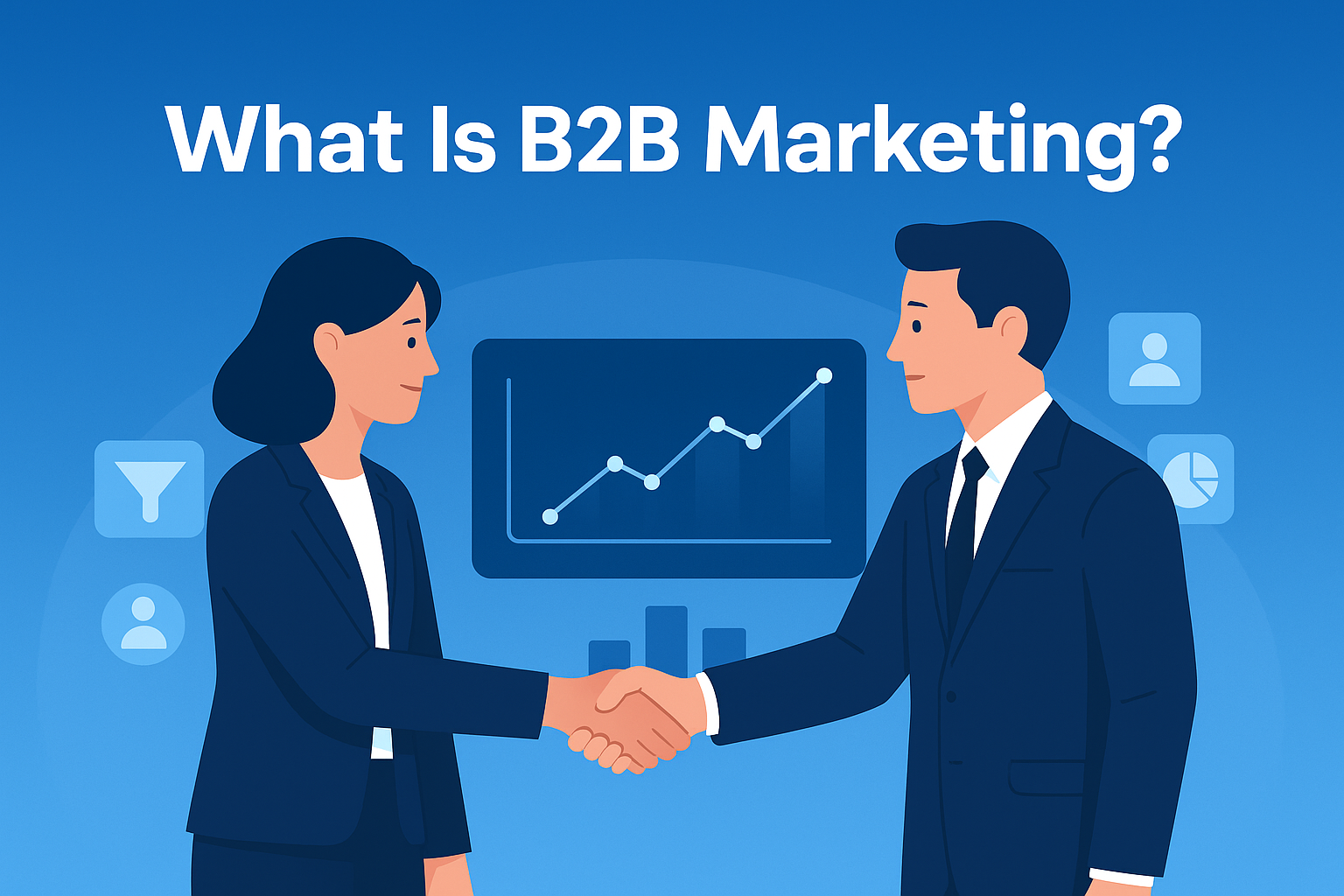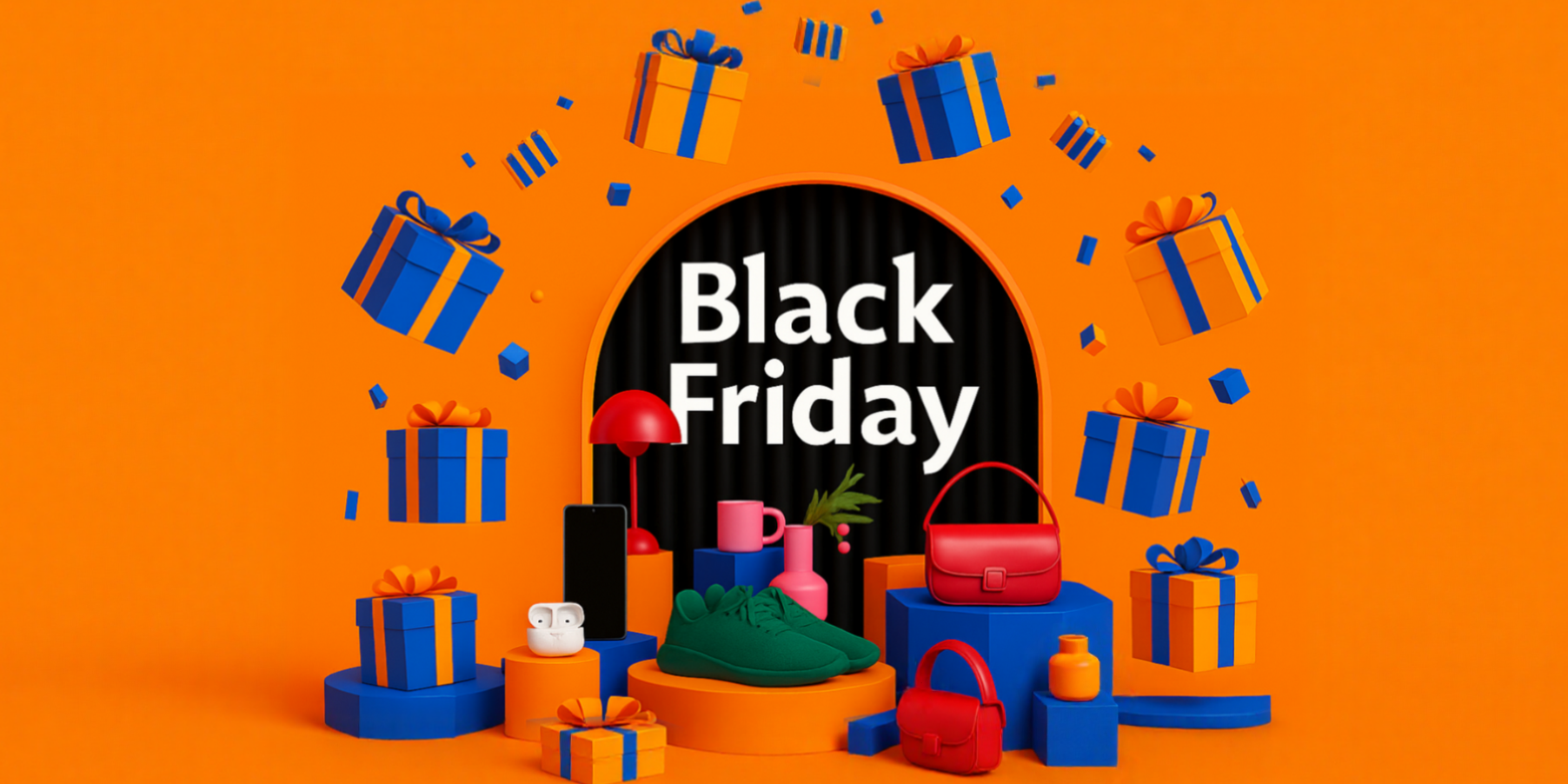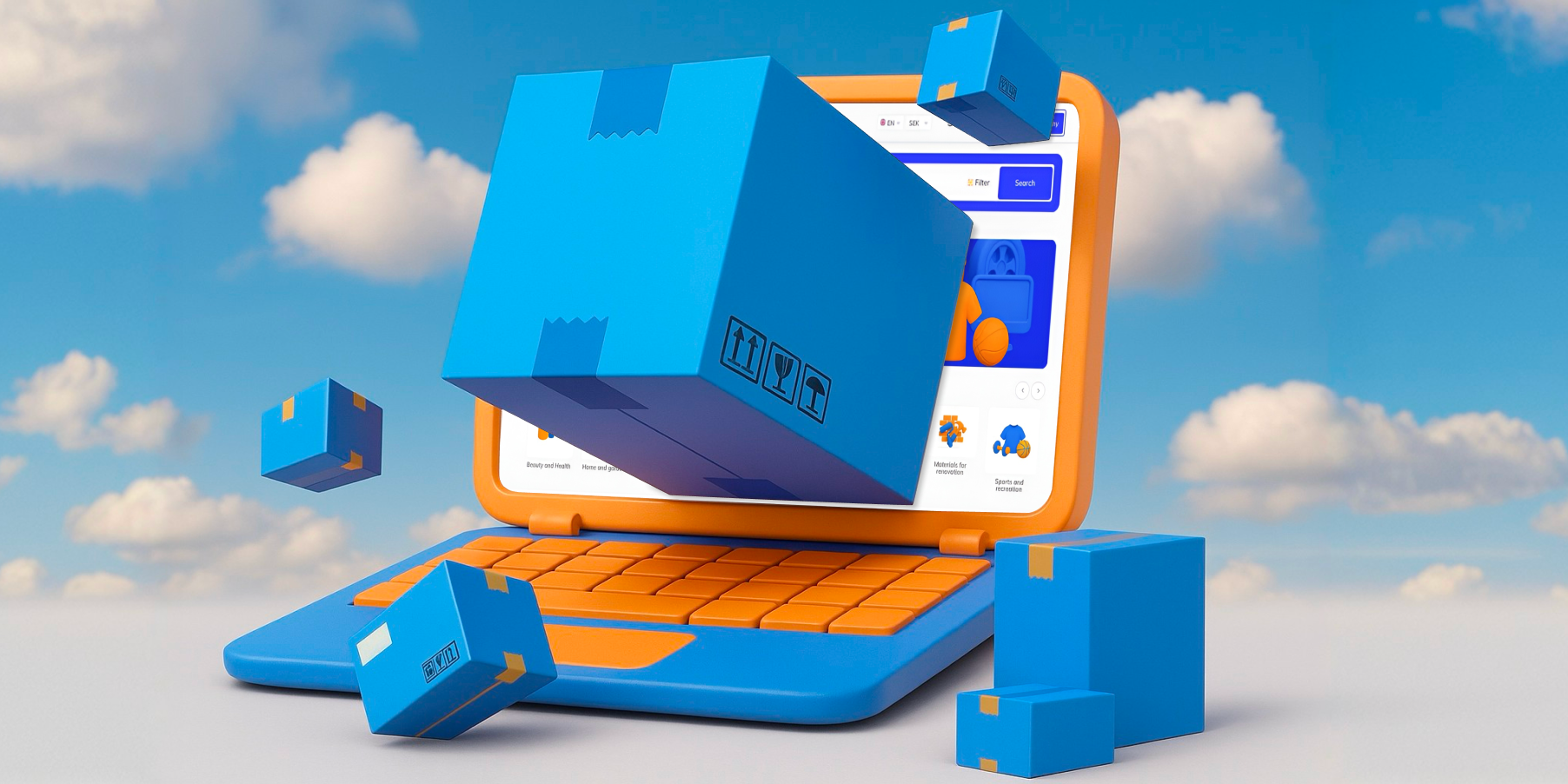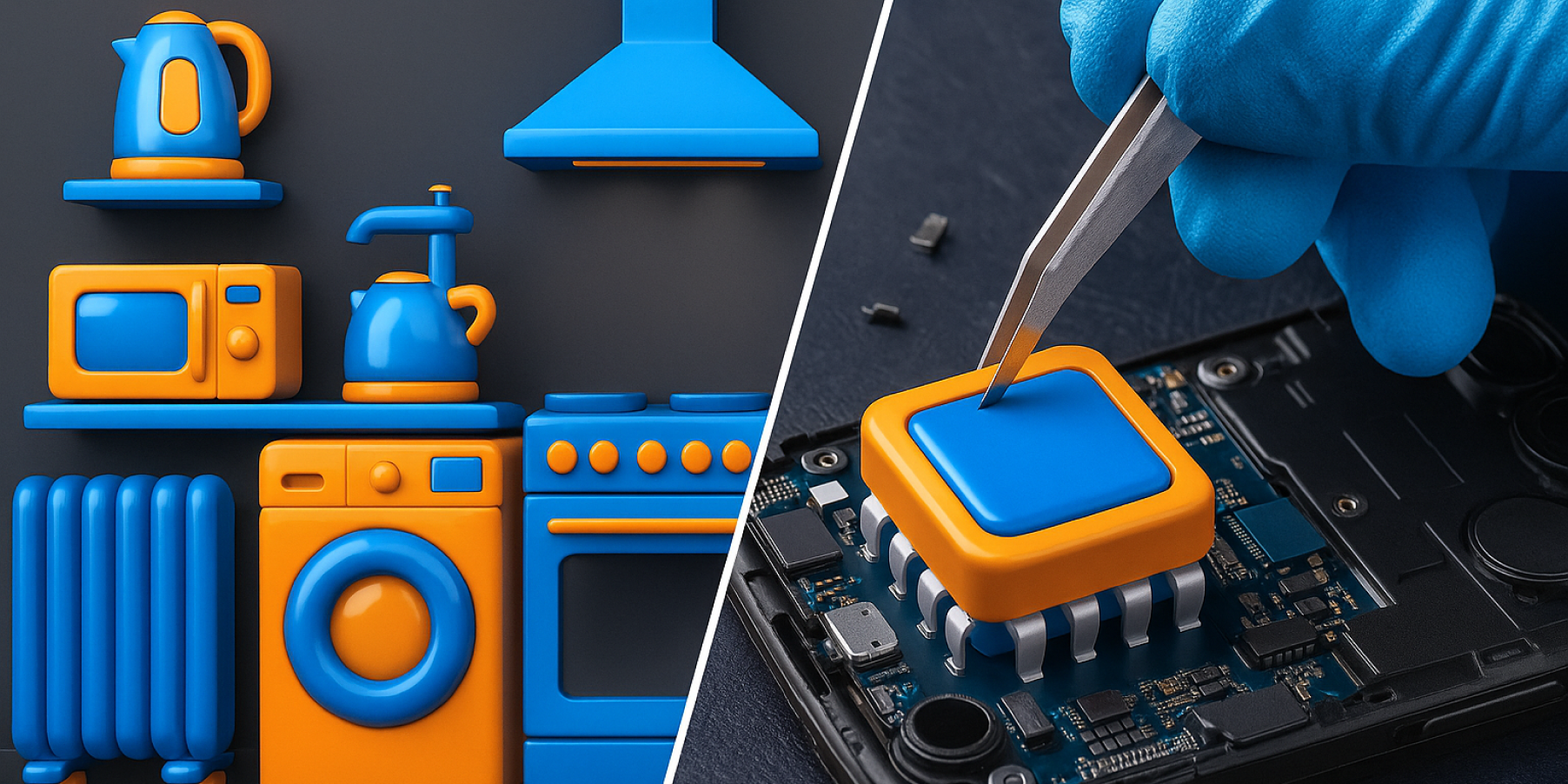What Is B2B Marketing? A 2025 Guide for Results‑Driven Teams
May 12, 2025
Discover what is B2B marketing, how it differs from B2C, key buyer‑journey stages, data‑driven strategies, and 2025 trends—AI, ABM, video, sustainability—to boost your B2B marketing performance.

B2B ≠ B2C. Selling cloud software or industrial parts to a buying committee of 10 people over 11 months is a very different puzzle from convincing one consumer to buy sneakers on impulse. Longer cycles, larger deals, multiple stakeholders, and higher switching costs make B2B marketing both a challenge and an opportunity. Yet companies that master it grow 2‑3 × faster than peers because competition thins as complexity rises.
What Is B2B Marketing?
B2B marketing is the set of strategies and tactics a business uses to attract, engage, convert, and retain other businesses—not individual consumers.
- SaaS example: Slack targets IT leaders with product marketing demos while nurturing end‑users with content on productivity hacks.
- LinkedIn Ads: A cybersecurity vendor runs account‑based campaigns that only appear to CISOs at Fortune 500 firms.
- Super Bowl surprise: In 2025, Workday’s “Rock Star” spot highlighted how even a mass‑audience event can spark C‑suite awareness for a finance‑ERP platform.
These examples show B2B stretching from niche inbound blogs to mainstream performance marketing when brand scale justifies the spend.
B2B vs B2C Marketing at a Glance
| Factor | B2B Marketing | B2C Marketing |
|---|---|---|
| Deal size & cycle | High $$$, 11–16 months, renewals crucial | Low $$, minutes‑weeks |
| Stakeholders | 6–13 people; cross‑dept committees | 1–2 individuals |
| Decision drivers | ROI, risk mitigation, long‑term value | Emotion, price, convenience |
| Content formats | White papers, demos, ROI calculator, webinars | Short ads, social posts, UGC |
| Channels | ABM, email marketing, LinkedIn, events | Meta/IG, TikTok, marketplaces |
| KPIs | SQLs, pipeline $, CAC‑payback, retention | Sales volume, AOV, repeat buys |
The B2B Buyer Journey & Sales Funnel
Awareness Stage (TOFU)
Goal: problem framing & brand recall.
- Tactics: inbound B2B marketing blogs, video explainers, podcast interviews, social selling posts, intent‑data display ads.
- Metrics: impressions, engaged sessions, new cookies.
Consideration Stage (MOFU)
Prospects explore options.
- Tactics: comparison e‑books, product marketing one‑pagers, webinars, AI‑powered ROI calculators, nurture email marketing.
- Metrics: gated‑asset downloads, demo requests, email CTR.
Decision Stage (BOFU)
Risk removal & consensus‑building.
- Tactics: ABM sequences, interactive pricing, case studies mapped to each persona, free trials.
- Metrics: sales‑qualified leads, pipeline velocity, win‑rate.
Retention Stage
Renew, upsell, and turn users into advocates.
- Tactics: value‑driven content academies, customer-only events, personalized success dashboards, loyalty email flows.
- Metrics: NRR, NPS, expansion ARR, churn %.
75 % of buyers prefer a rep‑free digital path—but pure self‑service drives higher “purchase regret,” so hybrid orchestration is vital.
Building a Winning B2B Marketing Strategy
- Size Your Market: Calculate Total Addressable Market (TAM) using industry data or bottom‑up lead counts.
- Define Ideal Customer Profile (ICP): firmographics, technographics, intent signals.
- Set Goals & KPIs: e.g., 3 × pipeline / ARR ratio, 6‑month CAC payback, 95 % product‑qualified lead acceptance.
- Craft a Value Proposition: Link pain points to measurable business outcomes; use voice‑of‑customer snippets for E‑E‑A‑T credibility.
- Channel Mix:
- Inbound B2B marketing for scalable awareness.
- Account‑based marketing (ABM) to penetrate high‑value accounts.
- Performance marketing (paid search, paid social) to accelerate lead generation.
- Content Plan: Map topics to each funnel stage; include value‑driven content (benchmarks, ROI calculators, TAM worksheets).
- Execution Cadence: 90‑day sprints with clear owners, budget, and tech stack (CRM, marketing automation, intent data, attribution).
- Measurement & Optimization: Closed‑loop reporting, cohort analysis, multi‑touch attribution.
Strategy Snapshot: SaaS Startup
| Pillar | Example |
|---|---|
| TAM | 28 K EU e‑commerce brands using Shopify |
| ICP | GMV > €5 M; Head of Growth persona |
| Demand Gen | SEO pillars + product‑led growth freemium |
| ABM | 200 Strategic accounts, 1‑to‑few LinkedIn + email plays |
| KPI | 30 % MoM PQL growth, <$6 k CAC, 0 .8 % churn |
Best Practices for 2025
- Plan around insight, not instinct: Use intent data to prioritize high‑propensity accounts.
- Work the numbers: Build live dashboards; B2B winners iterate 2–5 tests per month across funnel stages.
- Visual storytelling: Infographics and short‑form video now rank as the top two content investments for 2025.
- Pain‑point marketing: Lead with concrete problems your buyers self‑identify, then show quantified outcomes.
- Structured experiments: A/B test subject‑lines, CTAs, landing‑page personalization—all tie back to revenue, not vanity metrics.
7. B2B Marketing Trends Shaping 2025
| Trend | Why It Matters | Quick Win |
|---|---|---|
| AI Everywhere | 64 % of B2B teams already see ROI inside 12 months. | Deploy GPT‑assisted proposal writers to cut response time by 40 %. |
| Video & Livestreams | 61 % plan bigger 2025 video budgets. | Build a quarterly product-update live stream. |
| Social Selling 2.0 | LinkedIn algorithm favors engagement‑first thought leadership over ads. | Train execs to post narrative carousels weekly. |
| Sustainability Messaging | 71 % of millennial buyers expect ESG proof in vendor pitches. | Add CO₂‑savings metrics to case studies. |
| Data Literacy & RevOps | Omnichannel leaders grow 2× faster by integrating sales & marketing data. | Align KPIs in a shared RevOps dashboard. |
| Next‑Gen ABM | AI clustering enables “one‑to‑few” at scale, combining display + outbound personalization. | Use predictive scoring to expand look‑alike account lists by 30 %. |
B2B marketing success hinges on understanding a complex buyer journey, aligning content and channels to each stage, and grounding every decision in data. Define your TAM, craft laser‑focused ICPs, marry inbound with ABM, and iterate relentlessly.
Ready to level‑up?
Subscribe to our newsletter for monthly trend breakdowns.
Move beyond theory—deploy value‑driven, personalized experiences that convert prospects into lifelong customers.










